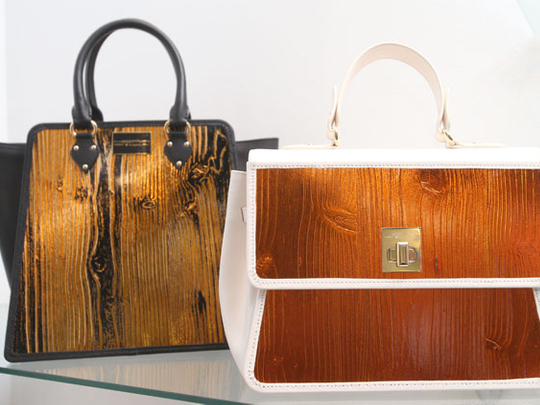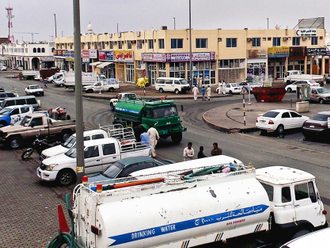
Italy must have had the largest pavilion at last month’s Index at the Dubai World Trade Centre. The international design exhibition is the largest interior design event in the Middle East, providing a showcase of the latest in technology, usage of materials and innovative approaches to interior design.
Italy has long been seen as the cradle of Western art and design, and Italian design concepts beautifully allow us to create an identity and express our chosen lifestyle and individuality. Italian design interprets this across a wide spectrum, from world-class sports cars to fashion, furniture, kitchen utensils and bathroom fittings — and let’s not forget marble floors and mosaics.
I spent my time at Index talking to several interior designers and furniture makers. All of us came to the conclusion that in order to see high-end, new and refreshing design concepts, we would need to visit Milan, host to the world’s largest furniture fair.
The emphasis in Dubai seems to be on introducing products and design concepts based on trusted norms, in response to a belief and market feedback that the region’s consumer simply demands different styles and products to those visiting the Milan Furniture Fair. That’s the place to see a tidal wave of new concepts and products, many produced by skilled craftsmen specifically for the exhibition. In turn this allows trendsetters to set the theme for the year ahead.
Adapting to tastes
Due to its geographical location, Italy is one of the very few European countries to have had close trading bonds with the Middle East for centuries — as a result, Italians understand the need to be able to adapt to different cultures and demands. Adaptability and flexibility is all important in Italian industry.
The country’s current design strength was built from the ruins of the Second World War, when defence factories switched to producing consumer goods, with funding from the Marshall Plan, an American initiative put in place to aid Europe with the funds to rebuild.
Many exhibitors at the show talked about family traditions, most starting two or three generations ago. These roots in small and medium-sized enterprises have allowed a greater responsiveness and therefore the creation and production of individual, niche designs quickly. As a result, Italian producers are more flexible and can more easily adapt to the requests and or desires from their specific clients.
Take the chandelier, seen as necessary to interiors solutions in most homes in the region. Although these are now made from different materials in styles, ranging from the classical to extremely modern, the pieces on display in Dubai were mostly in the traditional style, using crystal, porcelain or ceramic ornaments or a combination of these materials.
One Italian chandelier company, Razzetti, based in northern Italy, has been attending shows in the UAE for the past five years and has learned that the Middle Eastern market appreciates mostly baroque and classical styles while searching for quality. Razzetti’s response is a special product line for the Middle East, which, although still a rapidly growing market, adapts slowly to a modern approach, according to Tommaso Razzetti, third-generation proprietor. Customer emphasis is on quality with a moderate price tag attached. The Middle East is for this chandelier manufacturer the most lucrative market, followed by China, Russia and Eastern Europe.
Another Italian interior designer is Matteo Bianchi, born in Italy’s most romantic city, Venice, but educated in England. Based in London with clients in the city, he also has clients throughout Italy, in Dubai, in Lagos and many other cities in countries around the world, to whom he exports his experimental, eclectic style. >
Mix this with a natural Italian flair, add the London edge and you have elegant and understated but warm and functional ideas that are perfect for a global audience.
Setting the trend
Bianchi says it is Hollywood that sets the trend. Just think of The Great Gatsby, he says, and you will agree that after having seen that movie, we all like a bit of glitz and glamour in our living environment. The amount of opulence depends on personal taste, of course, and how far the wallet can be stretched.
Designers follow suit. But this is not only true with interior design concepts, it equally holds for fashion design, which is refined once street trends have been evaluated, and therefore the same principle applies to car design or kitchen utensils. Mind over form, as I would prefer to call it.
The show was not without new ideas and concepts — particularly with traditional materials and solutions being interpreted in unique new ways.
Traditional materials, be it stone or wood, are as much in use today as they have been in the past, but new techniques and materials allow us to design with greater flexibility and create unique pieces. Think of leather as something more than just upholstery for your favourite sofa — it also makes wonderful wall or floor coverings. Bricks can be used in more than just building walls and become a feature by themselves. The same applies to almost all materials used, including lighting, which is more and more capable of highlighting those elements that we wish to showcase and turn into conversation pieces.
Three young Italian entrepreneurs who only got together a few months ago brought their products to Index. A builder, a marketing specialist and a specialist in luxury car lacquer, established Hera Art and Luxury in Vintl, also in the north of Italy. Using nature meets glamour as their theme, the three have found a way to reintroduce wood as a new and novel product, suitable for more than just beams and floorboards.
Furniture meets fashion
In a secret process, the natural grain in each piece of timber selected is highlighted and contrasted with the less intriguing parts. It appears that the grain is brought to a slightly higher surface and treated with gold or silver leaf or other metallic finishes, while the rest of the wood is coloured a contrasting blue or red. The result is that a traditional material is given a totally new lease of life with a potentially new variety of uses.
Besides flooring, furniture and wall coverings, the material is being used in a line of limited-edition handbags for discerning buyers in Riyadh, Saudi Arabia. A broader fashion line is being developed, including a range of shoes. Lighting, jewellery and spectacle frames are all other options the company is exploring.
Elsewhere, Italian firm Prodottadagio’s modern take on the Tiffany lamp has had an astounding effect. Giorgia Paganini, a young architect with a passion for transparent materials, has created a wall lighting fixture that can easily function as a ceiling light, but with a broad versatility of form and colour.
Collaborative design
The design, Spigolo, is an indoor lamp with diffuse lighting, made up of two diffusers, an irregular polyhedron of coloured trasparent glass and an internal pyramid of etched glasses, containing warm LED light. The entire piece is held together by tin and copper put together by a master Venetian glassmaker.
Spigolo is part of a team effort where a group of different disciplines design and develop specifically for the needs of their clientele. Furniture, flooring, wall finishing and lighting are the core interests of Container, a company based in Treviso, just north of Venice, where either the design concepts are developed by the interior designer or the company is supporting the designer, creating with this a marriage between Middle Eastern demands and Italian or European styles.
Such approaches will help Italian design stay profitable as competition and cheap copycat products flood the market, but remaining true to its DNA will be a challenge for the industry.
— The writer, CEO of Image Creators, is a designer with wide experience in Europe and the Gulf






